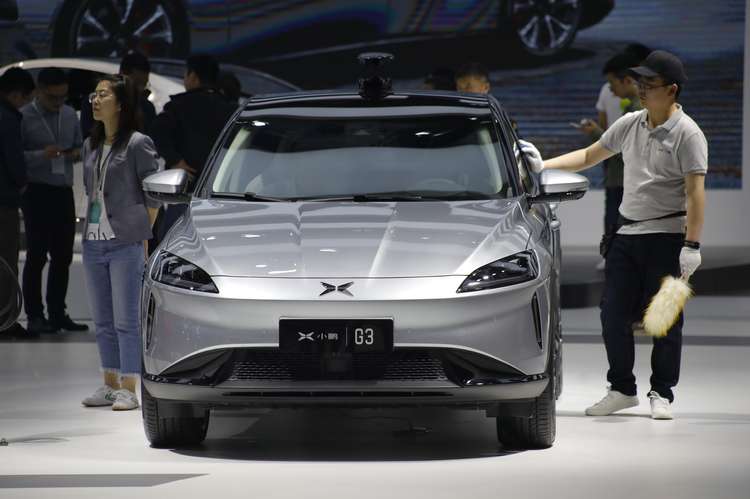No one can deny that AI is emerging as a game-changer, and companies that can harness its potential are reaping high profits. Equinix, a prominent provider of data center space, has witnessed a growing number of corporate clients utilizing its AI systems. As generative models — including the popular virtual interlocutor ChatGPT — mature at an astonishing speed, the companies that supply the necessary infrastructure tools are making fortunes, reminiscent of the early days of the gold rush.
Nvidia, renowned for its semiconductor designs essential for AI servers, has surpassed analysts’ expectations, announcing projected sales of USD 11 billion for the February-April quarter — a staggering 50% higher than Wall Street’s original forecast. Following the earnings release, the company’s market capitalization skyrocketed by 30%, reaching a remarkable USD 1 trillion. Nvidia CEO Jensen Huang declared that the world is on the brink of a new era of computing, emphasizing the pivotal role of AI.
The AI boom has not only elevated chip manufacturers like AMD and TSMC but has also impacted various other sectors within the computing infrastructure industry. From colorful cables to noisy air conditioning equipment, data center rental space, and software for running AI models and data processing, there has been a significant surge in demand. Since the release of ChatGPT in November of the previous year, the average weight index of 30 companies in this sector has increased by a staggering 40%, while the high-tech NASDAQ index has grown by only 13%. It is clear that a new tech sector is on the rise, as aptly summarized by Daniel Jeffries, a representative of the AI Infrastructure Alliance.
The latest AI systems, particularly generative models, are computationally demanding, requiring substantial computing power. Model size has been increasing exponentially, growing tenfold each year for the past six years, as highlighted by Amin Vahdat, head of AI infrastructure at Google Cloud Platform. GPT-4, the latest version powering ChatGPT, utilizes a staggering 1 trillion parameters, five times more than its predecessor. As models become increasingly complex, the need for enhanced computing power for training them also grows.
Chip manufacturers are the primary beneficiaries of this surge in computing power demand. Companies like Nvidia and AMD design and produce chips, which are in high demand among major cloud computing providers driving most AI applications. The anticipated growth of AI is expected to raise the demand for specialized chips such as GPUs by USD 10-15 billion within the next one to two years, according to UBS estimates. Nvidia’s data center revenue, already accounting for over half of its total sales, could potentially double. AMD is also entering the market with new GPUs this year. While AMD has yet to reach Nvidia’s GPU design prowess, even capturing a fraction of the market would be highly advantageous. In addition, AI-focused chip design start-ups like Cerebras and Graphcore are striving to carve out their own space, with around 300 such start-ups identified.
To function as a cohesive unit, GPUs in data centers require advanced networking equipment, including switches, routers, and specialized chips. According to research firm 650 Group, the network equipment market is projected to grow by 40% annually in the coming years, reaching nearly USD 9 billion by 2027. Nvidia dominates this market, accounting for 78% of global sales. However, companies like Arista Networks, based in California, have also captured investor attention, with their shares soaring almost 70% in the past year. Broadcom, known for producing chips facilitating network operations, expects sales of related equipment to quadruple to USD 800 million in 2023.
While the AI infrastructure market shows tremendous growth potential, certain limitations may impede its progress. Energy constraints, such as the difficulty in sourcing electricity to support high-demand data center clusters like those in northern Virginia or Silicon Valley, could pose challenges to further expansion. However, scaling down from large AI models and cloud-based inference to smaller systems can mitigate this issue, as smaller systems require less computing power for training and can be run on smartphones.
Moreover, the real use cases for generative AI models, despite their popularity, are still somewhat unclear. Hype can quickly transform into disappointment in the ever-evolving world of Silicon Valley. Nvidia experienced a market capitalization surge driven by the mining of cryptocurrencies like Bitcoin, only to witness a sharp decline when the cryptocurrency market collapsed. Regulatory concerns also loom, with policymakers worldwide worried about the potential job loss and misinformation associated with generative AI. In response, on May 11, EU lawmakers proposed a series of rules to limit the use of chatbots.
Despite these potential challenges, it is premature to adopt an overly pessimistic outlook. Even if generative AI does not revolutionize as promised, it will undoubtedly prove far more useful than cryptocurrencies. Additionally, numerous non-generative AI applications also require substantial computing power. Unless there is a global ban on generative AI, which is currently unlikely, the gold rush of AI infrastructure is poised to continue. As long as the industry remains heated, those trading the much-needed chisels and shovels will continue to thrive.

